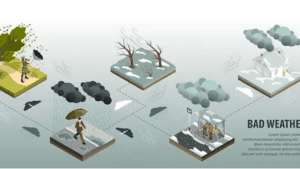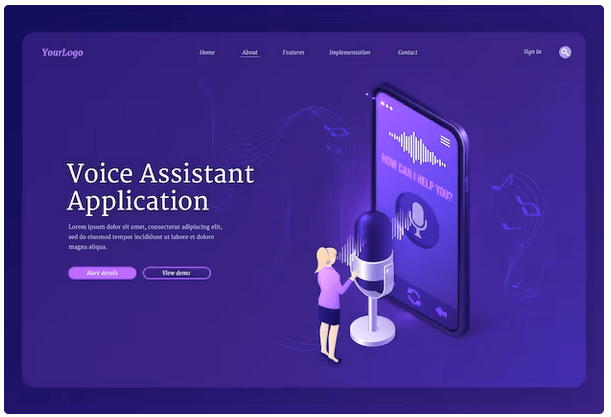
AI and Disaster Management: Saving Lives and Resources

Artificial intelligence (AI) is rapidly transforming the field of disaster management. AI-powered tools and technologies are being used to improve disaster preparedness, response, and recovery efforts.
How AI is used in disaster management
AI is used in disaster management in a variety of ways, including:
- Predicting and forecasting disasters: AI algorithms can be used to analyze historical data and current trends to predict the likelihood and severity of natural disasters. This information can help disaster response teams to be better prepared and to respond more quickly when disasters do occur.
- Monitoring and tracking disasters: AI can be used to monitor and track disasters in real time. This information can help disaster response teams to identify areas that are at risk and to coordinate their response efforts.
- Assessing damage and needs assessment: AI can be used to assess damage and needs after a disaster. This information can help disaster response teams to prioritize their efforts and to distribute resources more effectively.
- Search and rescue: AI can be used to assist with search and rescue efforts. For example, AI-powered drones can be used to search for survivors in areas that are too dangerous for human rescuers to access.
- Communication and coordination: AI can be used to improve communication and coordination between disaster response teams. For example, AI-powered chatbots can be used to provide real-time information to disaster victims and to coordinate the response efforts of different organizations.
Benefits of using AI in disaster management
There are a number of benefits to using AI in disaster management, including:
- Saving lives: AI can help to save lives by predicting and forecasting disasters, monitoring and tracking disasters, and assisting with search and rescue efforts.
- Reducing damage: AI can help to reduce damage from disasters by helping disaster response teams to be better prepared and to respond more quickly when disasters do occur.
- Improving efficiency and effectiveness: AI can help to improve the efficiency and effectiveness of disaster response efforts by helping disaster response teams to prioritize their efforts and to distribute resources more effectively.
- Enhancing communication and coordination: AI can help to improve communication and coordination between disaster response teams, which can lead to a more effective response.
Latest trends in AI and disaster management
The field of AI and disaster management is rapidly evolving, and new trends are emerging all the time. Here are a few of the latest trends:
- Increased use of machine learning: Machine learning is a type of AI that allows computers to learn from data without being explicitly programmed. AI-powered disaster management tools are increasingly using machine learning to provide more personalized and effective insights to users.
- Integration with big data: AI-powered disaster management tools are increasingly being integrated with big data platforms. This allows the tools to analyze larger datasets and to provide more comprehensive insights.
- Focus on real-time analytics: AI-powered disaster management tools are increasingly focused on providing real-time insights to disaster response teams. This allows them to make more informed decisions and to take action more quickly.
Key insights
Here are some key insights about AI and disaster management:
- AI is rapidly transforming the field of disaster management.
- AI-powered tools and technologies are being used to improve disaster preparedness, response, and recovery efforts.
- There are a number of benefits to using AI in disaster management, including saving lives, reducing damage, improving efficiency and effectiveness, and enhancing communication and coordination.
- The field of AI-powered disaster management is rapidly evolving, with new trends such as increased use of machine learning, integration with big data, and focus on real-time analytics.
Real-world examples of AI and Disaster Management
Here are a few real-world examples of how AI is being used in disaster management:
- The World Food Programme (WFP) is using AI to improve the efficiency of its food distribution efforts. The WFP is using AI to predict where food is needed most and to develop more efficient routes for distributing food.
- The United Nations Office for Outer Space Affairs (UNOOSA) is using AI to develop new tools for disaster monitoring and early warning. UNOOSA is using AI to develop satellite-based tools that can detect and track natural disasters in real time.
- The Red Cross is using AI to improve its search and rescue operations. The Red Cross is using AI to develop drones that can search for survivors in areas that are too dangerous for human rescuers to access.
Conclusion
AI is a powerful tool that can be used to improve disaster management in a variety of ways. AI can help to save lives, reduce damage, improve efficiency and effectiveness, and enhance communication and coordination.
Frequently Asked Questions
Q1: What is the primary focus of the blog post “AI and Disaster Management: Saving Lives and Resources”?
Answer: The primary focus of the blog post is to explore how Artificial Intelligence (AI) is used in disaster management to enhance preparedness, response, and recovery efforts, ultimately saving lives and valuable resources during natural and man-made disasters.
Q2: What are some key applications of AI in disaster management mentioned in the blog?
Answer: The blog discusses several applications of AI in disaster management, including early warning systems, predictive analytics for disaster risk assessment, resource optimization, and decision support tools for disaster response and recovery.
Q3: How does AI contribute to early warning systems for disasters?
Answer: AI helps improve early warning systems by analyzing vast amounts of data from various sources to detect early signs of impending disasters, providing authorities with timely information to take proactive measures.
Q4: What real-world examples of AI in disaster management are highlighted in the blog?
Answer: The blog provides real-world examples of AI being used in disaster management, such as the use of machine learning and data analytics during hurricanes and wildfires to predict their paths and assess damage.
Q5: How does AI optimize resource allocation in disaster management?
Answer: AI aids in resource optimization by analyzing data to determine the most efficient allocation of resources, such as deploying emergency responders, supplies, and equipment to the areas most in need during a disaster.
Q6: What is the future outlook for AI in disaster management, as discussed in the blog?
Answer: The blog touches on the future potential of AI in disaster management, including the development of more advanced predictive models, the use of drones and robotics for search and rescue operations, and the continued improvement of early warning systems to better prepare for and respond to disasters.



